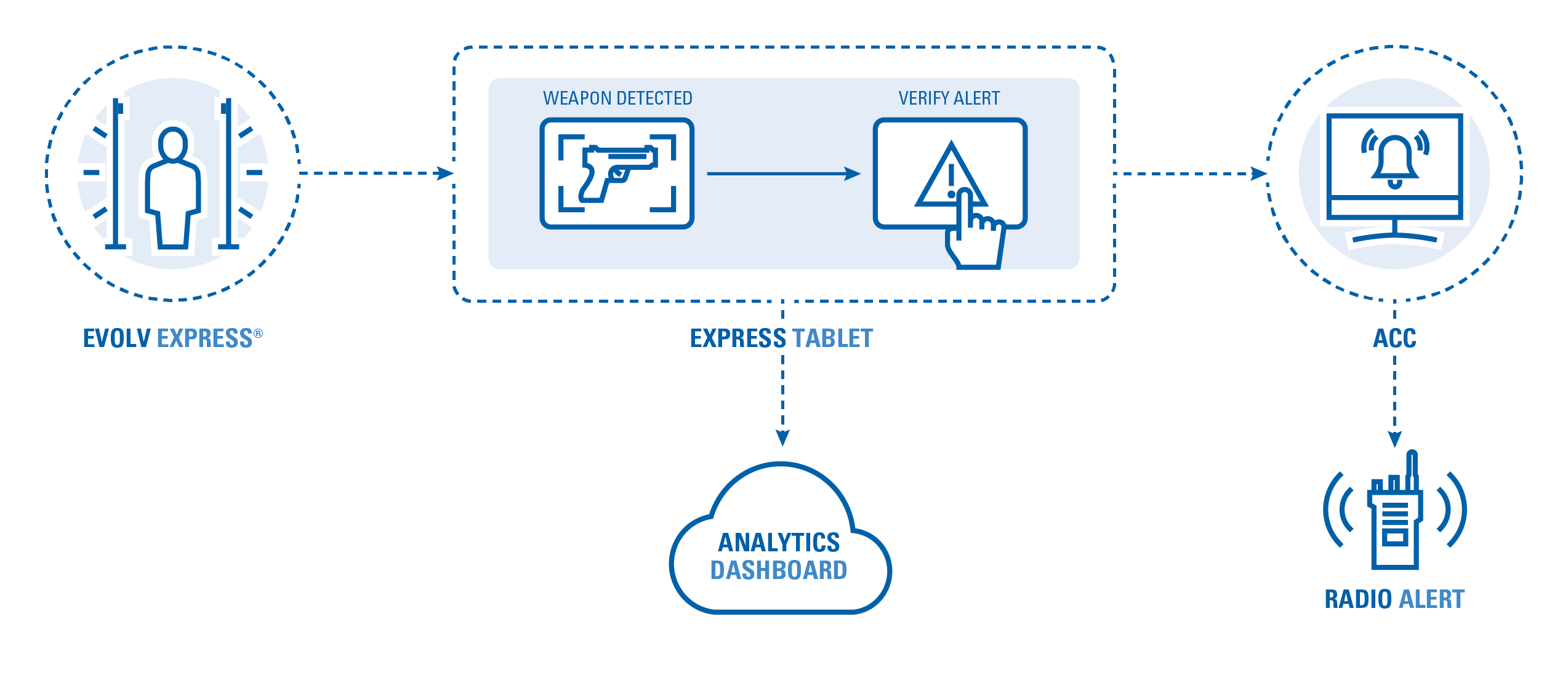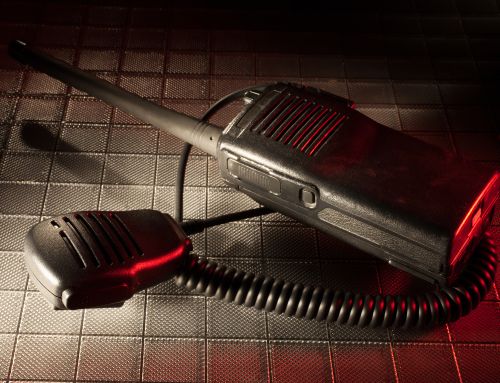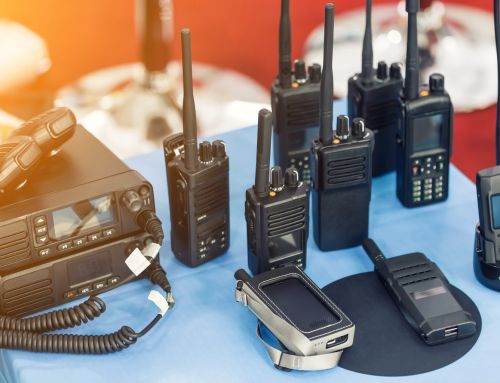Motorola Solutions Concealed Weapons Detection (CWD)*, powered by Evolv Technology, helps to proactively keep students and faculty safe by using advanced sensors and artificial intelligence to detect a wide range of concealed weapons and threats. It is the world’s first and only touchless security screening solution that is conducive to supporting post-pandemic security screening requirements. This solution operates up to ten times faster and far more effectively than traditional screening methods while providing a touchless experience.
Integrating Avigilon Control Center (ACC), this solution will help you see, understand and act on threats with more speed and accuracy than ever before. Once a threat is detected and confirmed by a security screener, alarms are sent directly to ACC. Cameras onboard the towers then stream live video to ACC, which gets recorded alongside the fixed video security feeds that are installed at the venue.
The call for more effective weapons detection systems on campus has taken on even greater urgency over the past few years due to the recent increase in violence, crime, and other security incidents being reported in schools and healthcare facilities, as well as in their surrounding communities.
In 2021, K-12 schools and school districts recorded 249 times a gun went off on campus, the most since 1970, according to the Naval Postgraduate School’s Center for Homeland Defense and Security. School board meetings have also experienced a steep increase in threats and violence.
In healthcare, the rate of assaults reached an all-time high in 2020, increasing 23% compared to the previous year, according to the International Association for Healthcare Security and Safety. There has also been a significant rise in reported cases of mental health issues among K-12 and college students, as well as hate crimes and domestic extremist activities in the country overall.
Today’s weapons detection technology can help minimize the risks that all of these concerning trends pose. Depending on the technology selected, these advanced systems can more effectively reduce the number of weapons – including firearms, large knives, and improvised explosive devices (IEDs) – being carried on campus or at campus-affiliated events, such as football games, basketball games, concerts, controversial speaker presentations, and more.
Metal Detectors Have Challenges When Screening for Weapons
Traditional metal detectors that are used for detecting concealed weapons have experienced significant problems over the past 50 years. The primary challenge is the slow throughput of the people they are screening. Traditional metal detection programs can make students late to class and delay patients from receiving their medical treatments. Throughput can also be challenging at stadiums holding athletic events or concerts, negatively impacting the attendee experience.
 Today’s concealed weapons detection systems improve safety by speeding up the screening process, reducing officer fatigue, integrating with other security systems, and more. Photo courtesy Evolv.
Today’s concealed weapons detection systems improve safety by speeding up the screening process, reducing officer fatigue, integrating with other security systems, and more. Photo courtesy Evolv.
There are several reasons for slow throughput. Traditional metal detectors often can’t differentiate between benign metal objects (like cell phones or keys) and weapons (like guns, knives, and bombs) that can cause mass casualties. Because of this, these detectors alarm practically everyone and everything, which slows down the screening process. They also don’t identify the specific location of a threat object, either on a person or in their bag. This leads to officer fatigue and forces campuses and venues to station a lot of security personnel at the front entrances, diverting them from other, more vulnerable locations.
Additionally, traditional metal detection systems aren’t integrated with video surveillance systems and don’t provide data, such as a number of entrants, entrance fluctuations based on day, time, and events, and analytics involving alarm rates. Without this centralized intelligence, security teams can’t correlate the data and use predictive analytics to manage risks and react in real-time to threats when they happen. If this information were available, it could also be used by security teams to improve staff efficiencies and screening effectiveness.
Another issue with traditional metal detectors, especially walk-through detectors, is aesthetics and the potential to send the wrong message to the community being protected. Their unwelcoming appearance could negatively affect some students’ abilities to learn and some patients’ abilities to heal.
Advanced Concealed Weapons Detection Systems Can Help
Fortunately, today’s advanced concealed weapons detection technology addresses these issues as well as numerous other problems associated with traditional metal detectors. These advances make a campus or venue’s weapons screening program much more effective and efficient.
One of the most impressive benefits of today’s new technology is that it dramatically speeds up the screening process. Systems like Evolv’s Express® enable students, patients, employees, and guests to enter a campus or venue at a regular walking pace. It does this by using sensors and artificial intelligence (AI) with flexible sensitivity settings to distinguish everyday metal items from weapons that can be used to commit mass casualty attacks. Furthermore, Evolv’s system can identify threat objects without requiring students, patients, visitors, and employees to stop, empty their pockets, and remove and open their bags.
As a result, crowded entrances and long lines outside a campus or event are eliminated, which also eliminates them as soft targets for individuals who might want to inflict harm.
Evolv’s Express solution also integrates with other security systems, such as video surveillance, and incorporates AI to comprehensively review, analyze, and gather insights captured during the concealed weapons detection process. The information that Express can provide includes visitor arrival curves and counts, including how many people entered the campus and at what time. Other data available for review include system performance, alarm statistics, and detection settings.
All of this information can help campus security and public safety executives make evidence-based decisions that streamline operations, improve student, patient, employee, and visitor flow, and optimize ingress safety and experience. It can also help campuses comply with incident reporting laws and regulations, such as the Clery Act and the Joint Commission’s new workplace violence reporting requirements.
Touchless Features Protect Security Staff, Reduce Officer Fatigue
Today’s advanced weapons detection systems enable officers to reduce their physical interactions with the individuals they are screening because the systems reduce the number of people and bags that must be physically inspected. If the technology integrates with video surveillance, the weapons detection process can be monitored remotely on a tablet across campus or in a security operations center in another state or country.
This hands-off approach reduces security staff exposure to communicable diseases… a significant advantage that was appreciated by officers, students, patients, parents, and visitors during the pandemic. Less physical interaction and remote monitoring also free up security personnel to address more pressing concerns and reduce officer fatigue.
When selecting a new weapons detection system, other features that should be considered include if the technology is user-friendly. For example, Evolv’s Express system is easy to learn and use, which cuts down on the time an organization needs to spend on training.
The technology is also lightweight, portable, and can be used indoors and outdoors. This enables the school, university, or hospital to strategically deploy the system, such as only when the risk of a security incident is high.
School Campuses Shouldn’t Look Like High-Security Prisons
Perhaps the biggest advantage to today’s concealed weapons detection systems is their non-threatening appearance. They’re not intimidating like traditional walk-through metal detectors. In fact, depending on the system being used, students, patients, visitors, and employees might not even realize they are being screened.
This low-key but effective approach to security helps schools, colleges, healthcare facilities, and other venues find the right balance between making the student, patient, and guest experience a welcoming one and providing strong campus security.
That being said, the appropriate level of security and its visibility vary greatly, depending on the campus or venue type. But even at locations where security needs to be more obvious, today’s advanced weapons detection systems, like Evolv’s Express, promise to provide even better and more resource-friendly protection.

Product Flyers
Concealed Weapons Detection Fact Sheet
Product Datasheets
Concealed Weapons Detection Datasheet
White Papers









